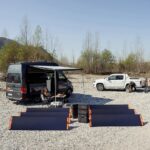When choosing a workspace, businesses often weigh the pros and cons of built-to-suit offices versus ready-to-use options. Each offers unique advantages depending on the company’s requirements. A common question arises: is a built-to-suit office more expensive than a ready-to-use space? To answer this, one must consider various cost factors, including initial expenses, customization needs, and operational requirements. This article explores these aspects in detail to provide a clear understanding of which option may be more suitable.
Built to Suit Office vs Ready to Use Office
Upfront Costs: Customization vs. Immediate Access
Built-to-suit offices require significant investment upfront. These spaces are developed based on specific needs, often involving detailed planning and customization. Businesses may need to pay for construction, interior design, and specialized installations. These costs can add up quickly, making the initial outlay for built-to-suit offices substantial.
In contrast, ready-to-use offices or shared offices in Chennai are pre-designed and equipped. Businesses can move in almost immediately without investing in setup or customization. This eliminates the need for construction-related expenses and allows companies to allocate resources elsewhere. For startups or businesses with limited budgets, the lower initial costs of ready-to-use offices are often more appealing.
Customization: A Costly Advantage for Built-to-Suit Offices
One of the primary reasons businesses choose built-to-suit offices is the ability to design a workspace tailored to their operations. From layout to facilities, every element can reflect the company’s identity and functionality needs. While this customization offers long-term benefits, it comes at a price.
Designing a space from scratch often involves hiring architects, contractors, and interior designers. Specialized equipment or unique features, such as soundproofing or energy-efficient systems, add to the overall expense. These costs can be justified for businesses that prioritize a workspace aligned with their long-term goals but may not suit those seeking immediate cost savings.
Ready-to-use offices, on the other hand, come with standard layouts and features. While they may lack the personal touch of built-to-suit spaces, they often include everything needed for day-to-day operations. For businesses with less complex requirements, this makes them a cost-effective alternative.
Time and Delays: An Indirect Cost Factor
The time required to set up a built-to-suit office can also contribute to its overall expense. Planning, construction, and customization processes are time-intensive. Delays in completion can further add to costs, especially if a business needs to rent temporary spaces or delay operations during the setup phase.
Ready-to-use offices or managed offices eliminate this concern. These spaces are designed for immediate occupancy, allowing businesses to start operations without waiting. For companies that value speed and flexibility, the time savings provided by ready-to-use offices often translate to lower indirect costs.
Operational Expenses
Built-to-suit offices often involve higher operational expenses. Businesses are typically responsible for ongoing maintenance, utilities, and other overheads. While this allows for full control over the workspace, it also means assuming greater financial responsibility.
In ready-to-use offices, many of these costs are included in the lease. Facilities management, cleaning services, and utility bills are often part of the package. This simplifies budgeting and reduces the administrative burden on businesses. For smaller companies or those looking to streamline operations, the bundled nature of ready-to-use offices is a clear advantage.
Long-Term Investment vs. Flexibility
Built-to-suit offices are often viewed as long-term investments. Businesses that own or commit to long leases in such spaces benefit from a workspace that evolves with their needs. While the initial costs are higher, the potential for personalization and long-term savings can make built-to-suit offices appealing for companies with stable operations and predictable growth.
Ready-to-use offices, on the other hand, offer greater flexibility. Shorter lease terms and the ability to scale up or down make them ideal for businesses in dynamic industries. While they may not provide the same level of control as built-to-suit spaces, their adaptability often offsets this limitation.
Considerations for Growing Businesses
For businesses in growth phases, choosing between built-to-suit and ready-to-use offices involves balancing current needs with future goals. Built-to-suit offices offer room for expansion and customization, aligning with long-term plans. However, the costs and time involved may not align with the immediate priorities of a growing business.
Ready-to-use offices, with their lower upfront costs and quick setup, allow businesses to focus on scaling operations without the distraction of managing a workspace. As these businesses mature, they can reconsider their office needs, potentially transitioning to built-to-suit spaces when stability allows.
Conclusion
When comparing built-to-suit and ready-to-use offices, cost depends on the priorities and circumstances of the business. Built-to-suit offices provide the advantage of customization and control but require significant upfront investment and long-term commitment. Ready-to-use offices offer affordability and flexibility, making them a practical choice for businesses seeking immediate solutions. By evaluating their current needs and long-term objectives, businesses can make an informed decision that aligns with their operational and financial goals.

















